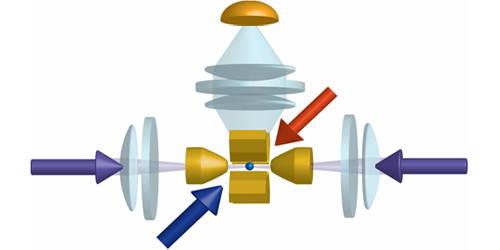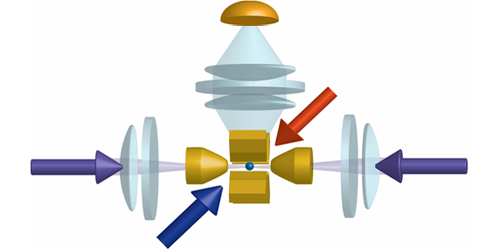Trapping a Rydberg Ion
Quantum physicists want the best of both worlds. Rather than choose between different qubit technologies, they’d prefer combining two of the top candidates—trapped ions and hydrogen-like Rydberg atoms—into one. As a step towards fulfilling this goal, Markus Hennrich from Stockholm University and his colleagues have excited a single strontium ion to a Rydberg state. The analysis of the system’s properties showed that exciting to one of the ion’s symmetric electronic states can mitigate unwanted electric field effects.
Trapped ions are currently among the head of the pack of possible qubit technologies, thanks to the isolated trap environment that allows long qubit lifetimes and low error rates. However, coupling qubits usually involves controlling the motion of all the ions, which poses a problem for large qubit ensembles. A Rydberg atom, by contrast, can have a long-range coupling interaction with its neighbors, owing to the large orbit of its single, highly excited outer electron. The challenge has been finding a way to effectively confine Rydberg atoms.
One possible solution is to excite trapped ions into Rydberg states. But the concern has been that the strong electric fields in an ion trap will shift or ionize the nearly unbound outer electron of the Rydberg state. Hennrich and colleagues explored the effect of an electric field on a single trapped strontium ion. To reach the desired Rydberg state, the team utilized two-photon excitation with counterpropagating laser beams, thus disturbing the ion less than in previous Rydberg ion experiments with single-photon excitation. The results showed that when the ion is excited into a spherically symmetric orbital, the trap’s quadrupole field does not alter the ion’s electronic structure.
This research is published in Physical Review X.
–Michael Schirber
Michael Schirber is a Corresponding Editor for Physics based in Lyon, France.





